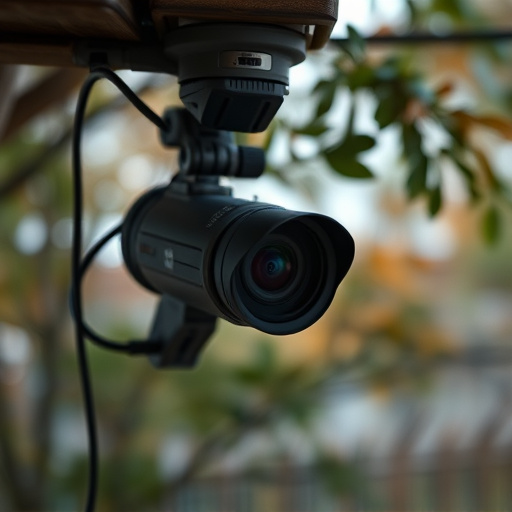Modern smartphones equip users with tools to detect spy cameras with cloud storage through lens analysis and heat signatures. Disabling cloud storage on these devices acts as a first line of defense against covert surveillance. Spy Camera With Cloud Storage integration empowers professionals for remote footage management but poses privacy risks, necessitating awareness campaigns, enhanced app features, stricter regulations, and legislation to protect personal and professional privacy in the digital era.
Uncover the insidious world of hidden spy cameras with our comprehensive guide to lens detection using smartphones. Learn how to identify covert surveillance devices and protect your privacy. From understanding the technology behind spy lenses to leveraging phone features, this article equips you with essential knowledge. Discover the power of cloud storage integration for remote monitoring, becoming a ‘spymaster’ in the digital age. Additionally, explore critical privacy concerns and implement countermeasures for a safer online environment.
- Understanding Spy Camera Lens Detection
- Utilizing Phone Features for Detection
- Cloud Storage Integration for Spymaster
- Privacy Concerns and Countermeasures
Understanding Spy Camera Lens Detection
Spy camera lens detection using a smartphone has become an essential tool in identifying hidden cameras, especially those with cloud storage capabilities. These advanced devices can capture and analyze images or videos in real-time, helping users detect potential privacy threats. By utilizing specialized apps or built-in sensors, phones can now scan for unusual lenses or infrared emissions, which are common signatures of covert surveillance equipment.
The process involves analyzing visual cues, such as the physical size and shape of a lens, and detecting heat signatures that may indicate active camera functionality. With cloud storage, spy cameras can transmit data wirelessly, making them harder to detect traditionally. However, enhanced smartphone technology allows users to actively hunt down these devices, ensuring better privacy and security in today’s digital age.
Utilizing Phone Features for Detection
Modern smartphones are powerful tools that can aid in detecting hidden spy cameras equipped with cloud storage, thanks to their advanced features. One of the primary methods is by leveraging the camera itself. Users can analyze the lens’ physical characteristics, such as its shape, size, and placement, which can be indicative of a spy camera. For instance, some smartphones offer digital zoom capabilities that, when activated, might reveal unusual patterns or distortions around the lens, suggesting an irregularity that could be associated with hidden cameras.
Additionally, advanced mobile operating systems provide accessibility to low-level camera settings, allowing users to inspect and manipulate parameters like focus distance and aperture size. Adjusting these settings can sometimes expose a spy camera’s presence by distorting the image or introducing unusual artifacts. With cloud storage disabled or limited, it becomes even more challenging for these hidden cameras to operate unnoticed, making smartphone features an effective first line of defense against surveillance equipment.
Cloud Storage Integration for Spymaster
In today’s digital era, a spy camera with cloud storage integration offers advanced surveillance capabilities for Spymasters. This innovative feature enables seamless access and management of recorded footage from anywhere with an internet connection. Cloud Storage serves as a central hub, securely storing data and allowing for easy retrieval, editing, and sharing of evidence.
This technology is particularly beneficial for professionals in law enforcement or private investigation who require real-time access to surveillance materials. With just a few clicks, they can download, analyze, and share footage, enhancing efficiency and effectiveness in their operations. The Spy Master’s ability to leverage cloud storage leverages state-of-the-art digital solutions for optimal results.
Privacy Concerns and Countermeasures
The rise of spy camera devices, often equipped with cloud storage capabilities, has sparked significant privacy concerns among individuals and organizations alike. These covert cameras can be hidden in plain sight, recording activities without consent. The ease of use and accessibility of such devices through online platforms make them a potential threat to personal and professional spaces, raising ethical questions about surveillance and data protection.
To counter these issues, several measures can be implemented. First, awareness campaigns can educate people on the existence and risks of spy cameras. Regular updates for mobile applications and operating systems can include features that detect unusual camera activity or hidden lenses. Additionally, legislation and stricter regulations regarding the sale and use of surveillance equipment can deter malicious actors from employing such devices for invasive monitoring.
Spy camera lens detection using phone features and cloud storage integration has become a vital tool in navigating today’s digital landscape. By understanding how these devices operate and implementing privacy countermeasures, users can stay informed and protected from hidden surveillance. As technology advances, so too do measures to detect and prevent the use of spy cameras, ensuring folks remain in control of their personal spaces and data security. In light of these advancements, it’s crucial to stay informed and adapt strategies for safeguarding against the use of covert recording devices, especially those that utilize cloud storage.
